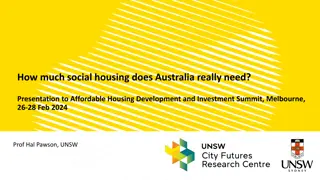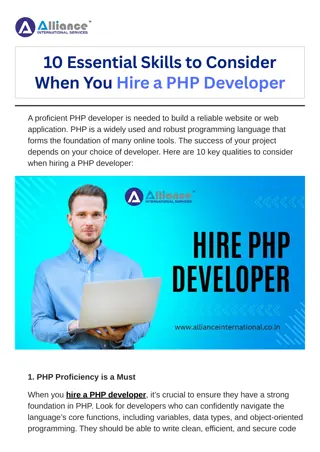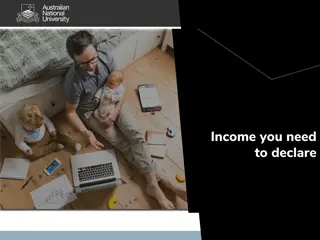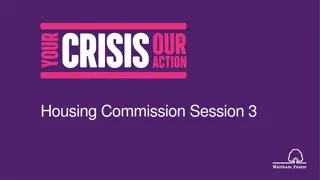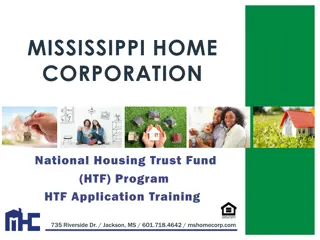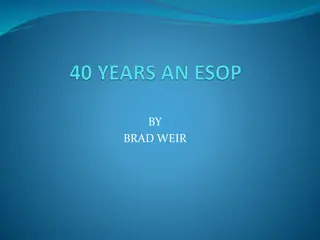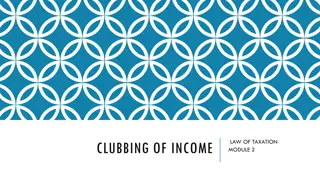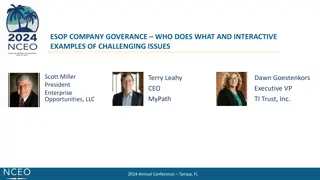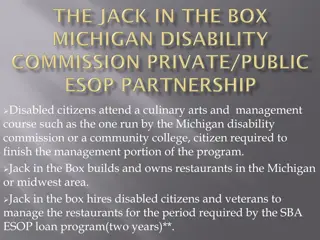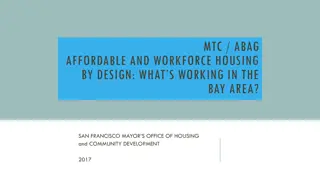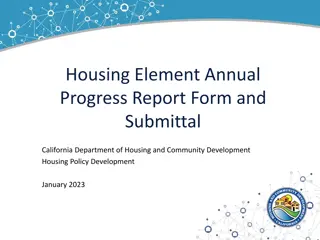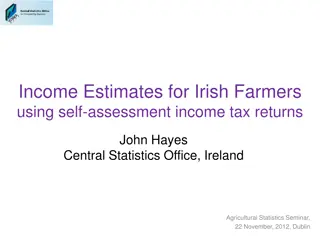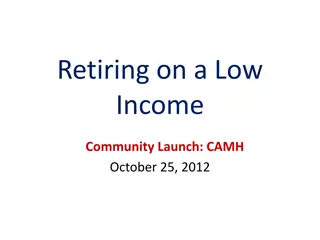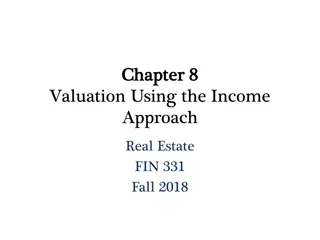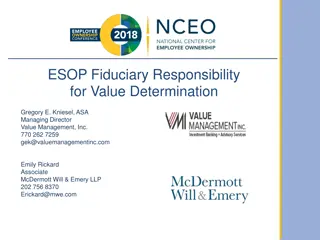Leveraged ESOP Low-Income Housing Developer Proposal Overview
This PowerPoint presentation outlines a proposal developed by a California public benefit corporation and leveraged ESOP developer to address housing issues for low-income individuals, including veterans. The proposal involves leveraging ESOPs to build multifamily apartments, sell units to HUD/Vash voucher holders, and provide long-term solutions to poverty among veterans. The plan includes collaborations with city departments, VA, and HUD to settle housing scandals effectively.
Download Presentation

Please find below an Image/Link to download the presentation.
The content on the website is provided AS IS for your information and personal use only. It may not be sold, licensed, or shared on other websites without obtaining consent from the author. Download presentation by click this link. If you encounter any issues during the download, it is possible that the publisher has removed the file from their server.
E N D
Presentation Transcript
California public benefit corporation & Leveraged ESOP low income housing developer This PowerPoint builds on PowerPoints from 2010/11 that dealt with HUD/Vash home ownership and entrepreneurship This was one of my finalists to present to SC4 community college Speech and Entrepreneurship Honors classes Later at UM Flint I developed it later to embrace my spot on the Habitat for Humanity live/work home ownership wait list Here in san Francisco the plan has been tweaked to become the bases for my proposal to the federal courts to set up a consent agreement with the city and the VA and HUD to settle the HUD/vash porting scandal and the failure to inspect and house HUD/Vash participants & the city and developers red lining of homeless vets out of home ownership opportunity's
I Joined the @NCEO in 1984 The DOL through ERISA regulations does not allow an ESOP to own Real Estate holding company's IE the Doorman and Housman could not own an apartment house. Recently however Hotels have set up ESOPs (SEIU Local 14) In this case the ESOP has built a property that is sold to veteran's utilizing the VA multifamily home loan system and does not own the property but might manage it The ESOP leverages its dept by selling mortgages to the veteran homeowner/landlord Leveraged ESOP borrows funds to build senior & low income multifamily apartments & hires contractors and subcontractors and leases those employees back to the same to do the work. The ESOP is related to a California public benefit corporation who's mission is to sell the units to HUD/Vash home owners SF planning and home ownership departments realize that the lottery would not work well if the veteran is the homeowner
A California public benefit ESOP developer The ESOP pays down the leveraged dept with apartment sales to the HUD/Vash voucher holder and the dept becomes ESOP equity payable to the construction workers and developer staff The ESOP developer might be the realty management service provider to the building with is future cash flows Mortgages might be cash flows to the ESOP The HUD/Vash Vet also owns 1 or more market rate apartment to rent out over 30 years of the life of the mortgage witch is allowed under the VA multifamily loan program Most likely the market rate apartment is held under a family or elder law trust to shield it from Bridge card & Medicaid & and SSI asset tests. Apartments owned with a Mortgage are not assets(yet) This program would be a long term(30 year) plan to end poverty to veterans and their descendants
Is the city of san Francisco redlining? Statistical data says yes they are How to redline the class of homeless people and veterans out of the mayors homeownership opportunity's & how to use the Planning commission to further redline this class? Can HUD inspection of non compliant SRO s rent only units be used to satisfy the off site BMR units required by San Francisco's Inclusionary Housing Program ? The nonprofit SRO slumlord master lease can never be a bases for home ownership and there economic incentive for these nonprofits to forcibly keep our section 8 money in their accounts San Francisco's Inclusionary Housing Program requires new residential projects of 10 or more units to pay an Affordable Housing Fee, or meet the inclusionary requirement by providing a percentage of the units as "below market rate" (BMR) units at a price that is affordable to low or middle income households, either on- site within the project, or off- site at another location in the City
San Francisco runs a multijurisdictional housing Exclusionary program Start with the Mayors homeless department that tells meeting attendees that HUD/Vash will permanently bar porting of housing choice vouchers. Force vets in the city with vouchers into substandard un permitted housing with fraudulent housing inspections by the housing authority & HUD/Vash(city attorney vs Wue) We set up a mayors home ownership program that uses rules to exclude self identified vets from owning their own low income apartments (lottery) & bar them from owning Market rate apartments as a future retirement fund, we do this because are campaign donors are the Nonprofits that now own most low income housing. We set up minimum AMI rents that keeps out the SRO folks from the tenderloin.
San Francisco steals HUD/Vash housing choice vouchers This is a violation of Shapiro VS Thompson Supreme court ruling prohibiting rules by the government to take any public benefit and to prohibit travel by any citizen We claim that this is a Federal Tort and social worker malpractice claim in the amount of $450 Million against the VA. WE claim HUD has failed to properly supervise the SF housing authority in inspecting units ( the Ms. WU case and the SRO case) We claim that HUD and The VA have failed to properly supervise the rights of VA multifamily home loan and HUD/vash rights to homeownership in the city where the city and housing authority fail to enforce them The planning commissions lottery and the housing commissions privatizing public housing would be examples of ways to thwart a porting right. City College homeless students program directors and staff have been in attendance at city homeless department meetings for years and are witness to the it's request to never allow a HUD/Vash voucher to be ported into the city HUD/Vash claims no one has ported a voucher into the city in the last 6 years, we have learned the above in the last 5 months
Our requested consent agreement with the federal judge In the next 10 years the city into a trust fund $ 90 Million that can only be used by 800 individuals who are HUD/Vash receipts to pay $100,000 each for a VA multifamily apartment(down payment) (San Francisco settlement) The Housing authority under a federal supervision will port all vouchers and will facilitate home ownership using HUD/Vash vouchers to all of the 800 + plaintiffs Over the next 10 years the San Francisco housing authority will pay into a trust fund public housing lands and buildings to build vet owned mixed use housing
800 HUD/Vash vouchers; economic impact of homeownership 800 X $600,000 = $480 Million worth of Mortgages Two Market rate apartments per veteran landlord, $960 Million plus the occupied units above equals $1,114 Million Under city rules the vets would be entitled to additional market rate apartments do to oversubscribing the below market percentages of new builds so 800 vets would own 4 to 5 apartments each through time 800 veteran landlords X 5 apartments each at market rates equals 4000 market rate apartments so we propose a judicial consent agreement to place all vet owned buildings into a special tax district How many Veterans live with regular HUD vouchers or in public housing? Our legal compliant extends to them as well as in they are given no choices but to live in a LIHTC building and forced to give up VA benefits


